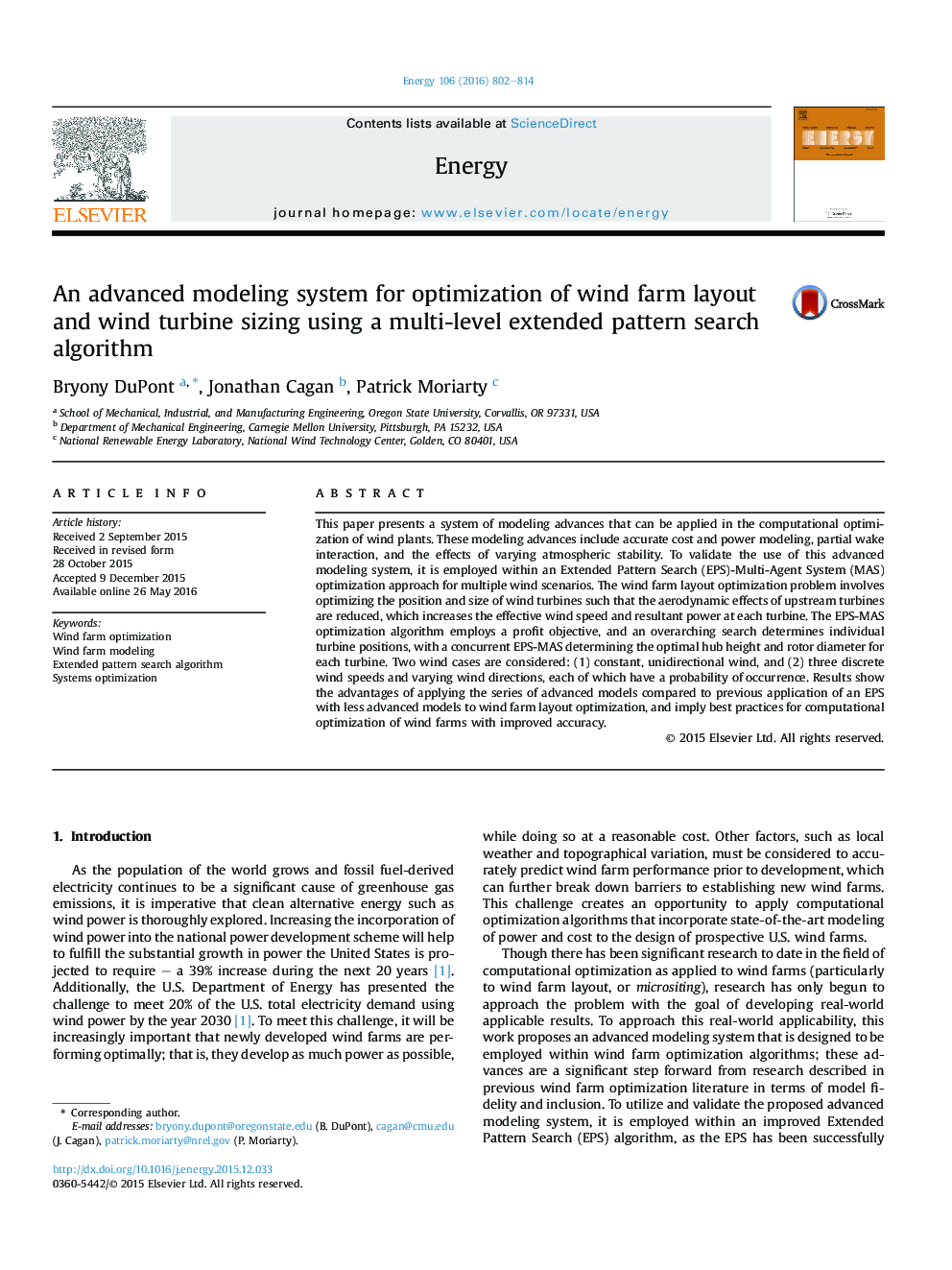| Article ID | Journal | Published Year | Pages | File Type |
|---|---|---|---|---|
| 1731002 | Energy | 2016 | 13 Pages |
•An advanced modeling system for WFO (wind farm optimization) is proposed.•Fulfills need for new, accurate modeling for real-world application in wind farms.•Advanced optimization algorithm develops layouts using these models.•Determined empirical practices for WFO considering accurate cost, power, and site.
This paper presents a system of modeling advances that can be applied in the computational optimization of wind plants. These modeling advances include accurate cost and power modeling, partial wake interaction, and the effects of varying atmospheric stability. To validate the use of this advanced modeling system, it is employed within an Extended Pattern Search (EPS)-Multi-Agent System (MAS) optimization approach for multiple wind scenarios. The wind farm layout optimization problem involves optimizing the position and size of wind turbines such that the aerodynamic effects of upstream turbines are reduced, which increases the effective wind speed and resultant power at each turbine. The EPS-MAS optimization algorithm employs a profit objective, and an overarching search determines individual turbine positions, with a concurrent EPS-MAS determining the optimal hub height and rotor diameter for each turbine. Two wind cases are considered: (1) constant, unidirectional wind, and (2) three discrete wind speeds and varying wind directions, each of which have a probability of occurrence. Results show the advantages of applying the series of advanced models compared to previous application of an EPS with less advanced models to wind farm layout optimization, and imply best practices for computational optimization of wind farms with improved accuracy.
